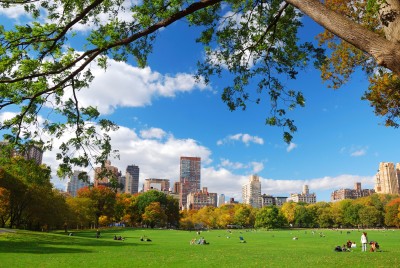I love researching New York genealogy. I also love a puzzling challenge. Put the two together and you have family search genealogy in New York State. As confusing and challenging as it can be for outsiders, tracing ancestry in New York can be just as challenging to New York State residents. Take heart, I plan to give you some insight into conducting New York State genealogy; however, first, I’ll start with a little history, migration patterns, and border disputes.
History
The history of New York State starts with Henry Hudson sailing his ship, the Half Moon, up the Hudson River in 1609. Later in the 1620s, the Dutch West India Company established Fort Orange (now known as Albany) and Manhattan. Throughout the 1600s, there were land disputes between the Dutch and the English, with the English winning out in the 1670s. Even though the English took the upper hand, the Dutch influence is still very apparent, even today. Just look at the area names alone – Harlem, Flatbush, Flushing, Yonkers, the Bowery, and Coney Island are all Dutch in origin.
Migration
In regard to migration patterns, one of my genealogy researcher philosophies is that there are movers and stayers. The stayers add stability to a community. The movers or newcomers add change to the mix. In the early days of New York, or America for that matter, moving wasn’t easy. Overland trails and roads were hard on the body and spirit, and slow, tedious, and dangerous to boot. One of the first byways created in the early 1700s was the Boston Post Road from Manhattan to Boston.
Following coastlines and waterways was the path of least resistance. The major New York State rivers are the Hudson, Mohawk, St. Lawrence and, to a lesser extent, the Delaware. The Hudson River allowed settlers to go inland from what is now New York City. The Mohawk River took them farther west. The St. Lawrence River provided a route from New England and Canada. The Delaware River was a connection with Pennsylvania.
As people moved from region to region, so did their cultures and religions. As settlement occurred by groups of people, so began record keeping of some sort. By the late 1600s, the Huguenots were found in New York City and New Rochelle. Ulster Scots were setting up housekeeping in New York’s Orange and Ulster Counties. In the early 1700s, the first Germans came to the Hudson River Valley.
Borders
Insofar as borders go, New York didn’t always look like it does today, and that’s what makes researching New York genealogy difficult at times. Before the borders were set, there was a lot of land going back and forth among the states. Early on, New York had disputed land areas with Massachusetts, Vermont, Connecticut, New Jersey and Pennsylvania. These included the counties of Columbia, Dutchess, Charlotte, Cornwall, and Dukes. Until the borders of the states were settled, an early county may have wound up as part of a different state. Take for example my Teachman family line who originally owned property on the New York-New Jersey border in Orange County. The “buy” land records are in New Jersey, but the “sell” records are in New York, because during the time my family owned the property (in the 1800s), the border between the two states was moved. So, my family ended up being residents of New York rather than New Jersey, without moving an inch. When they sold the property in the late 1830s, the deeds were filed in New York.
Sometimes family search genealogy can get confusing on census records, as well. Once again, I use my family as an example. My great great grandfather, who was born circa 1818, reported on one census that he was born in New Jersey, and another that he was born in New York.
This is important for New York genealogists to note, because the names, boundaries, and locations of counties changed during this early period. So, if you are searching in one county and not finding what you are looking for, research that county and see if the name changed, or if it were part of another county or another state at some point.
For example: Gloucester and Cumberland counties were ceded from New York to Vermont in 1777. The two counties were combined to create Cumberland County; however, in 1781, Vermont split the short-lived county into four counties: Orange, Windham, Windsor, and Washington (old). The remaining New York fragment of Charlotte County (on the western side of Lake Champlain) was renamed Washington County in 1784.
Now starts the confusion (or fun). Riddle me this: What is a city and more than a city? New York City, of course. Of the original counties, Kings, New York, Richmond, and Queens are actually part of New York City. They are known more commonly as the boroughs of New York City. Kings County is the borough of Brooklyn. New York County is Manhattan. Queens County is Queens. Richmond County is Staten Island. The Bronx is the fifth borough and county of New York City.
As fun, as it may be, New York genealogy and tracing ancestry, can get complicated. Sometimes it is best to contact a genealogy ancestry service. RecordClick has accredited and certified expert genealogical researchers in New York to give you advice or to help you trace family history. The initial consultation is free and just a mouse click away.
This is just the first in a series of New York genealogy-related articles by Certified Genealogist Joan Shurtliff. Coming up: Working with Land Records in New York.







